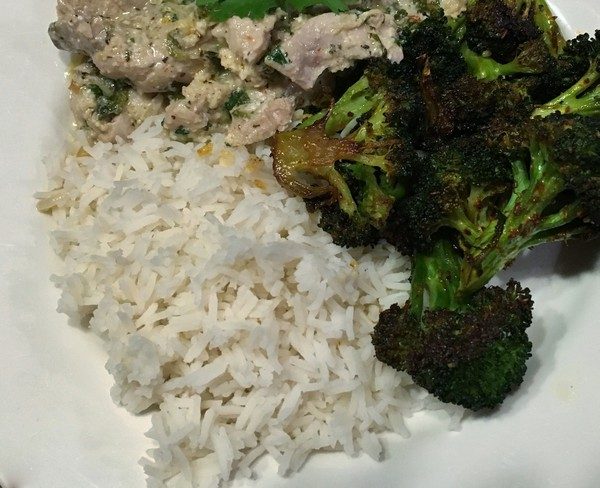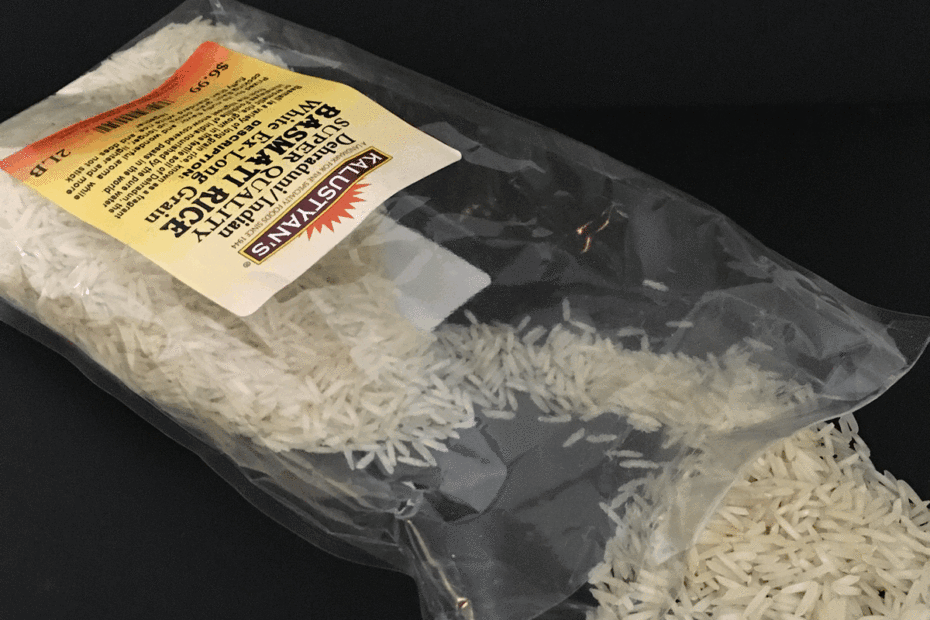I’ve always made rice, be it long grain, jasmine, basmati, the same way — twice as much water as rice, a little salt. Bring the water to a boil, add the rice, turn the heat down as low as you can, cover and cook for 20 minutes. Works every time. If I remember, or want to get fancy, substitute chicken broth for the water. Mexican style, blend some cilantro, and anything green — a poblano pepper, a tomatillo etc. — with the chicken broth and proceed as usual.
So when I was looking at Made in India and she had a recipe for “Perfect Basmati Rice” I was skeptical. How much better was this than my normal way? There are a lot of cultures that are really particular about how rice is cooked, much like how the French judge a cook on how perfect an omelet they turn out, but working harder to make “perfect” rice wasn’t on my bucket list.
However, there’s nothing like a challenge to get me to do something and I was curious to see if this method/recipe was going to make a difference. Feeds four and here’s how it goes:
- 1 cup basmati rice
- 1 ½ cups of just boiled water
- 2 tablespoons canola oil
- ¾ teaspoon salt
Wash the rice in a few changes of cold water until the water runs clear. Let it soak in a bowl of cold water for at least 10 minutes, but 30 is better, then drain.
In a separate pot, boil the water.
Put the oil in a wide bottom pan (that has a lid) on medium heat. Add the rice and salt and stir to coat all the rice with the oil. Pour in the boiling water, turn up the heat and bring the rice to a “fierce” boil.
Put the lid on, turn the heat down to low and simmer the rice for 10 minutes. Do not take the lid off!
When the 10 minutes is up, turn the heat off and let the rice rest for another 10 minutes. Just before serving, dot with butter if you like and fluff with a fork. Serve and enjoy!
 My verdict: As hard as it is to admit, this was much better than my normal basmati rice! Definitely worth the extra time (which is really just planning ahead). The grains of rice were long and perfectly cooked. You do have to be careful to soak the rice in a fairly large dish and drain it well. The second time, I tried to take a short cut and my rice wasn’t well drained (or soaked) and it wasn’t as good as the first time. A pot with a glass lid helps to see what’s going on, since she tells you that removing the lid is a definite no-no. I’m even going to see if this method (with longer cooking time) will work with brown basmati rice.
My verdict: As hard as it is to admit, this was much better than my normal basmati rice! Definitely worth the extra time (which is really just planning ahead). The grains of rice were long and perfectly cooked. You do have to be careful to soak the rice in a fairly large dish and drain it well. The second time, I tried to take a short cut and my rice wasn’t well drained (or soaked) and it wasn’t as good as the first time. A pot with a glass lid helps to see what’s going on, since she tells you that removing the lid is a definite no-no. I’m even going to see if this method (with longer cooking time) will work with brown basmati rice.

